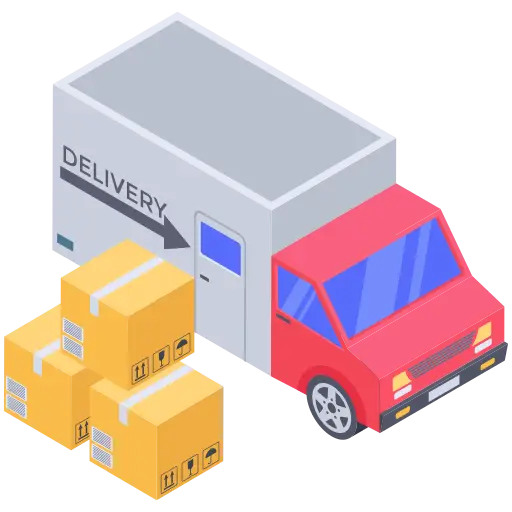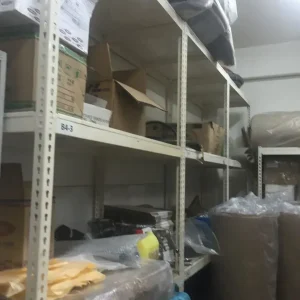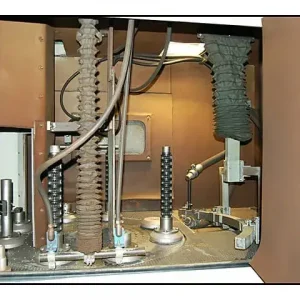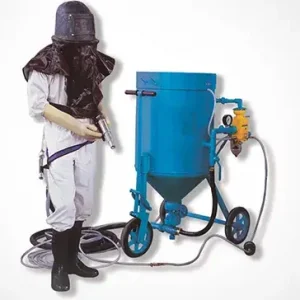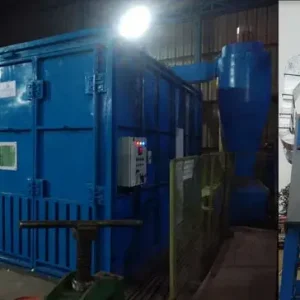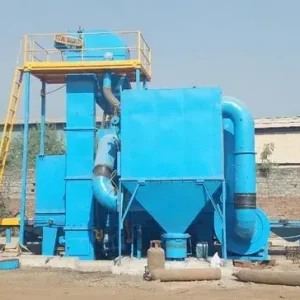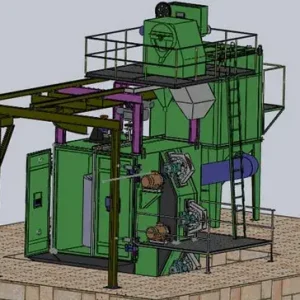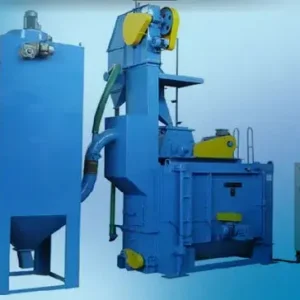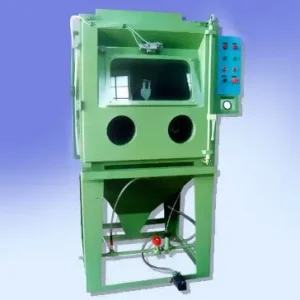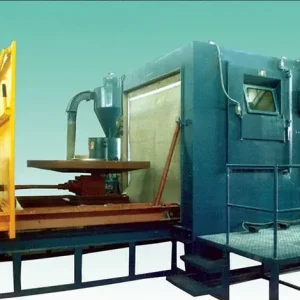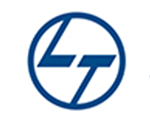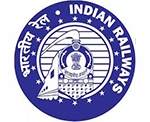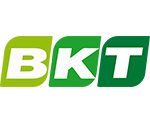By AeroWheel Surface Finishing
Sand blasting has become a vital part of surface preparation across various industries. Whether it’s removing rust from metal, cleaning casting surfaces, or preparing a product for painting or coating, sand blasting machines play a crucial role.
But not all sand blasting machines are the same. At AeroWheel Surface Finishing, we provide a range of sand blasting systems, each designed for specific applications, part sizes, and work environments.
In this article, we break down the main types of sand blasting machines, how they work, and which industries they’re best suited for.
1. Portable Sand Blasting Machines
Function:
Portable sand blasting machines are mobile units used for cleaning, rust removal, paint stripping, and surface roughening on large structures or at field sites.
How It Works:
These machines use compressed air to push abrasive media through a nozzle. They come with a blast pot, hose, nozzle, and a control system.
Best For:
- On-site blasting for bridges, tanks, ships, and buildings
- Field repairs and maintenance
- Large surface areas that can’t be brought into a cabinet
Key Benefits:
- Easy to transport
- Works on vertical and uneven surfaces
- Flexible abrasive options
2. Pressure Blasting Cabinets
Function:
These are enclosed machines where blasting is performed inside a cabinet using high-pressure air and abrasive media.
How It Works:
The operator places the part inside the cabinet and controls the blasting through gloves and a blast gun. A viewing window allows visibility. Dust is collected by an integrated system.
Best For:
- Small to medium parts
- Precision blasting and finishing
- Clean and controlled workspaces
Industries:
Automotive, electrical, fabrication, job shops
Key Benefits:
- Dust-free operation
- Better safety
- High precision
3. Suction Blasting Cabinets
Function:
Suction cabinets work on venturi effect, where abrasive is pulled into the blast stream using suction instead of pressure.
How It Works:
Compressed air passes through a nozzle, creating a vacuum that draws abrasive into the stream. Less aggressive than pressure blasting.
Best For:
- Light cleaning and polishing
- Soft metals, plastics, or delicate parts
- Decorative finishes
Key Benefits:
- Lower abrasive consumption
- Budget-friendly
- Easier maintenance
4. Blast Rooms (Chambers)
Function:
Blast rooms are large enclosures built for blasting big or bulky components that can’t fit inside a cabinet.
How It Works:
An operator enters the room with protective gear and manually performs blasting using a blast hose. The system includes media recovery and dust extraction.
The different types of shot blasting equipment available and their uses
Common Faults in Sand Blasting Machines & Troubleshooting Tips
What Makes a Reliable Shot Blasting Machine Manufacturer?
Best For:
- Heavy steel structures
- Castings, tanks, vehicle chassis
- Shipbuilding, railways, infrastructure components
Key Benefits:
- Handles oversized parts
- Full environmental and dust control
- Efficient abrasive recycling
5. Automatic Sand Blasting Machines
Function:
These machines are designed for mass production and consistent blasting without manual intervention.
How It Works:
Parts are loaded on a conveyor or rotating table. Automated nozzles or blast wheels clean the parts as they pass through.
Types:
- Conveyor-based machines
- Rotary table blasters
- Spinner hanger machines
Best For:
- Batch processing
- Repetitive cleaning of similar parts
- Large volumes
Industries:
Foundries, fabrication, manufacturing, hardware production
Key Benefits:
- Saves labor
- Uniform blasting
- High output efficiency
6. Wet Sand Blasting Machines
Function:
Wet blasting uses a mixture of abrasive and water to reduce dust and control heat generation.
How It Works:
A slurry of water and abrasive is blasted through a special nozzle, offering a gentler clean and less airborne dust.
Best For:
- Polishing and smooth finishing
- Heat-sensitive materials
- Dust-sensitive environments
Key Benefits:
- Dust suppression
- Smoother finish
- Reduces static charge and warping
How to Choose the Right Sand Blasting Machine?
Here are a few key factors to consider:
- Part size and volume
- Surface condition and desired finish
- Budget and production speed
- Workplace environment (indoor, field, cleanroom, etc.)
- Abrasive type you plan to use
Our team at AeroWheel Surface Finishing can help you select the ideal machine for your specific industry, usage, and space constraints.
Conclusion
Choosing the right sand blasting machine is critical to achieving a clean, smooth, and properly prepared surface. Whether you’re working on delicate metal parts or large steel structures, there’s a blasting machine tailored for your needs.
At AeroWheel Surface Finishing, we design, build, and supply a wide range of sand blasting machines—from portable models to fully automated systems—backed by service, training, and genuine spare parts.
📞 Looking to upgrade or expand your blasting setup?
Get in touch with AeroWheel Surface Finishing for a personalized consultation and demo.

